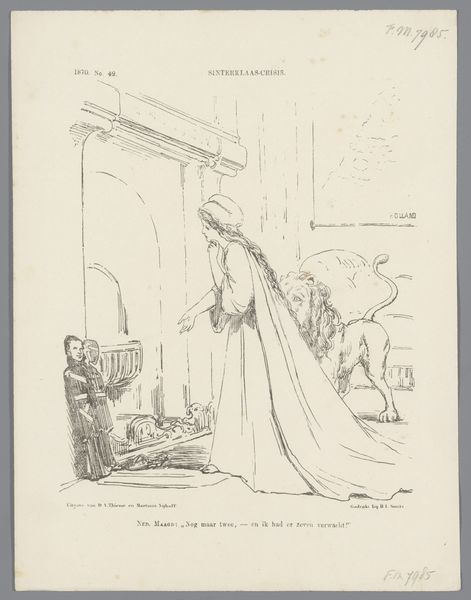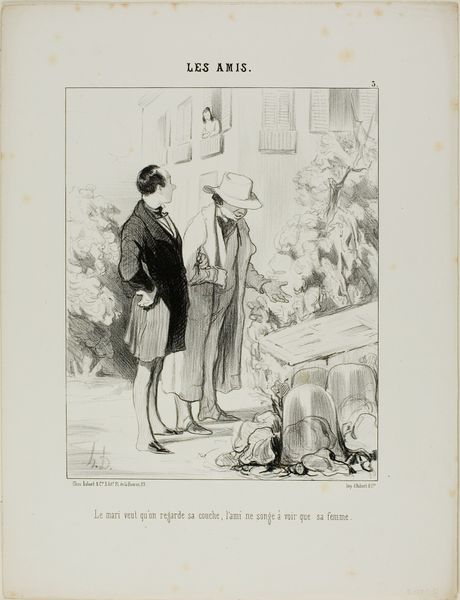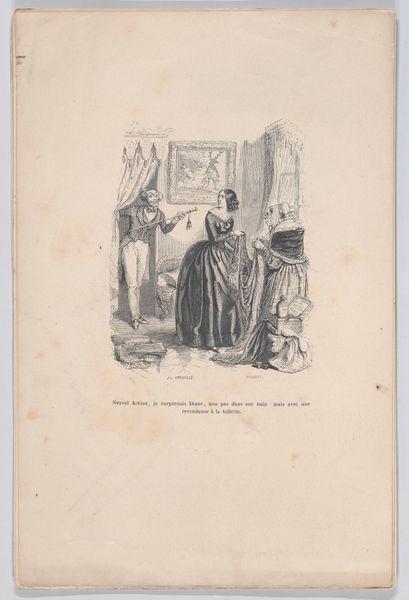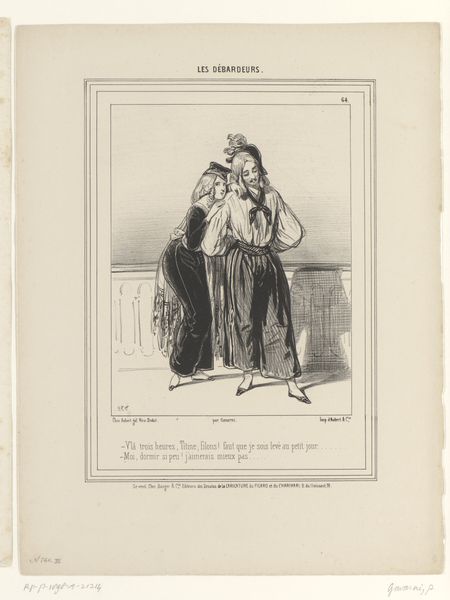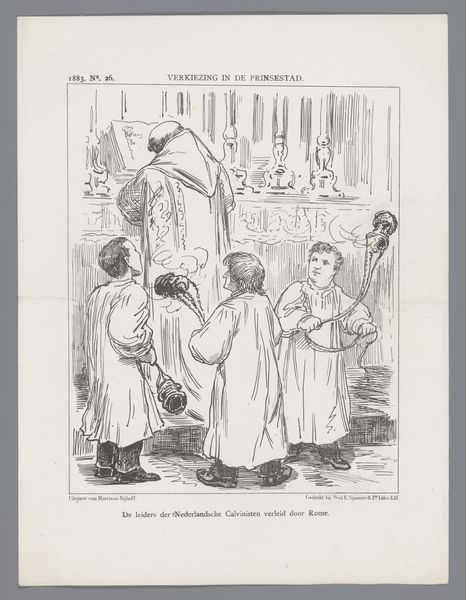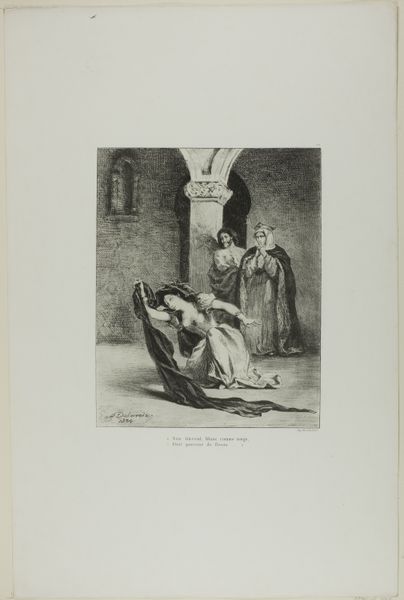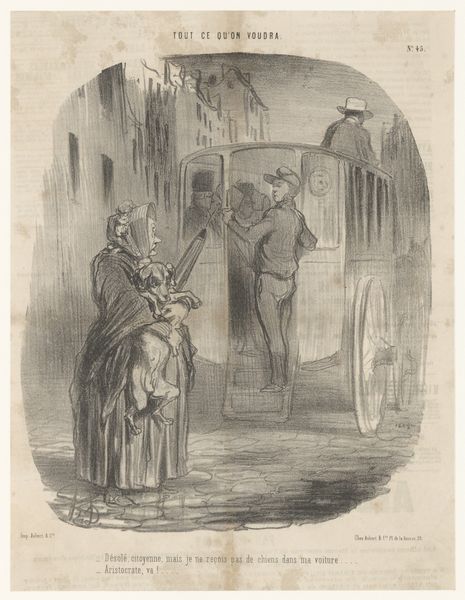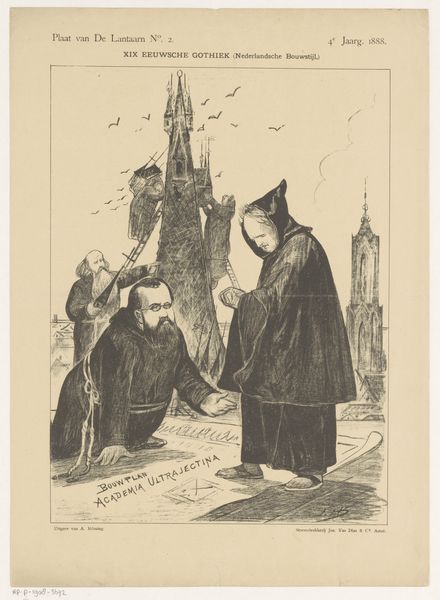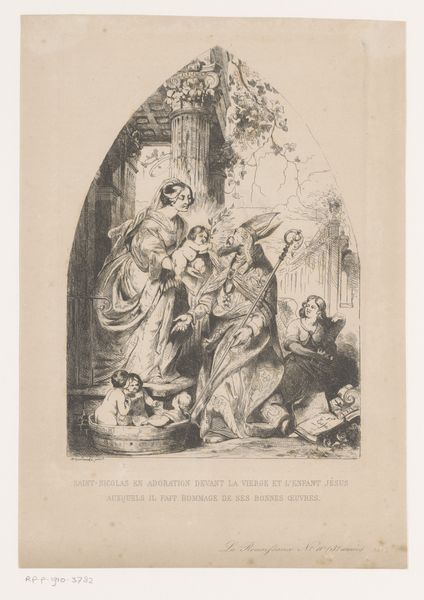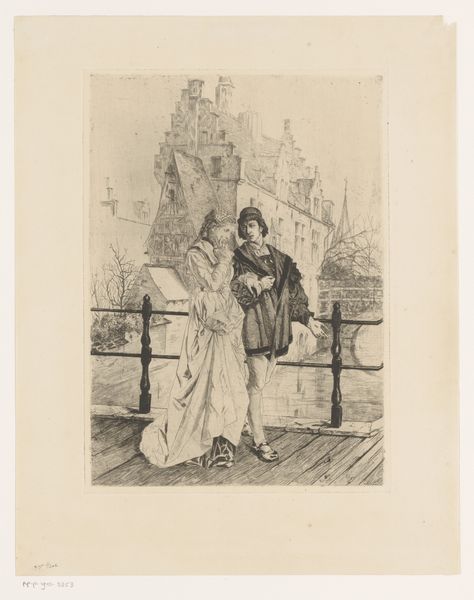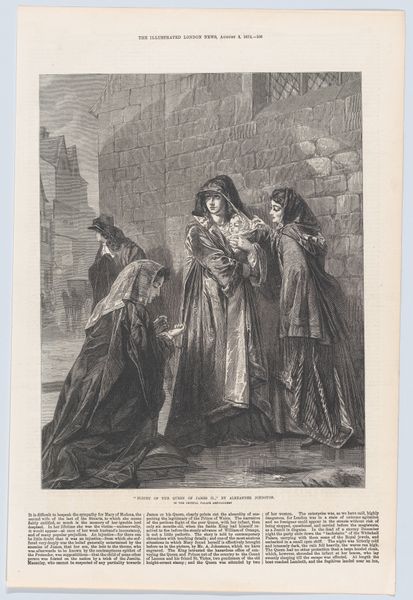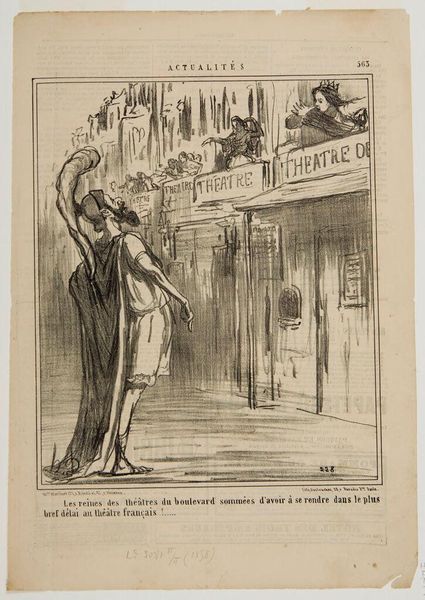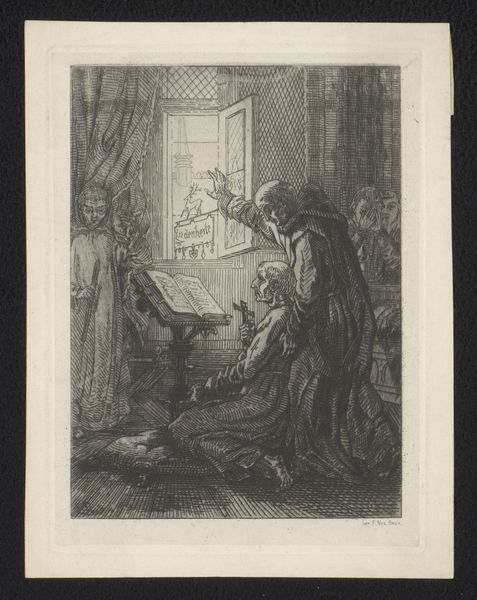
drawing, print, engraving
#
drawing
#
neoclassicism
# print
#
engraving
Dimensions: height 335 mm, width 255 mm
Copyright: Rijks Museum: Open Domain
Curator: This intriguing engraving, titled "Spotprent over de grondwetswijziging in 1887", was created by Jan Holswilder in 1887. The medium—print on paper—affords us an opportunity to really delve into the intricacies of its design. Editor: The density of the hatching immediately strikes me, Curator. It gives the whole scene a claustrophobic, almost mournful quality. The high contrast heightens the drama considerably. Curator: Indeed. Let's look closer at the composition. The artist has staged the figures almost like a tableau, inviting a decoding. The "Tweede Kamer" or Second Chamber appears to be a tailor modifying the gown of "Artikel 194," while figures representing Dutch society look on. Editor: The tailoring gesture carries weight, suggesting a refashioning, an amendment of something fundamental. Note also the use of classical style to create drama that resonates in Dutch society as an ironic comment on governance. But why that particular mode of commentary? Curator: Precisely, as historians, we understand that political cartoons use visual cues and established imagery to comment on current events. Neoclassicism, popular at the time, may signal the weighty significance of constitutional change to its intended, probably middle-class, audience. And here it is used ironically to ridicule it. Editor: Now, let's focus on the figures observing this act. Their postures communicate a range of reactions: perhaps resignation or even outright disapproval, signaling a division of Dutch opinions on this grondwetswijziging or constitutional reform. It could reflect how the reforms impact people of differing wealth status and political opinions, not simply a set of detached formal elements. Curator: Agreed, and I believe the deliberate use of shadows casts another level to this political scene: from light to dark, the artist guides us on our journey for meaning. Editor: It’s thought-provoking how the stark formal contrasts reflect deeper socio-political fractures in 19th-century Netherlands. We’ve both deepened our insights into the relationship between style, politics, and material context. Curator: Indeed, making connections is always more rewarding than isolating observations; Holswilder clearly sought to capture more than meets the casual eye here.
Comments
No comments
Be the first to comment and join the conversation on the ultimate creative platform.
